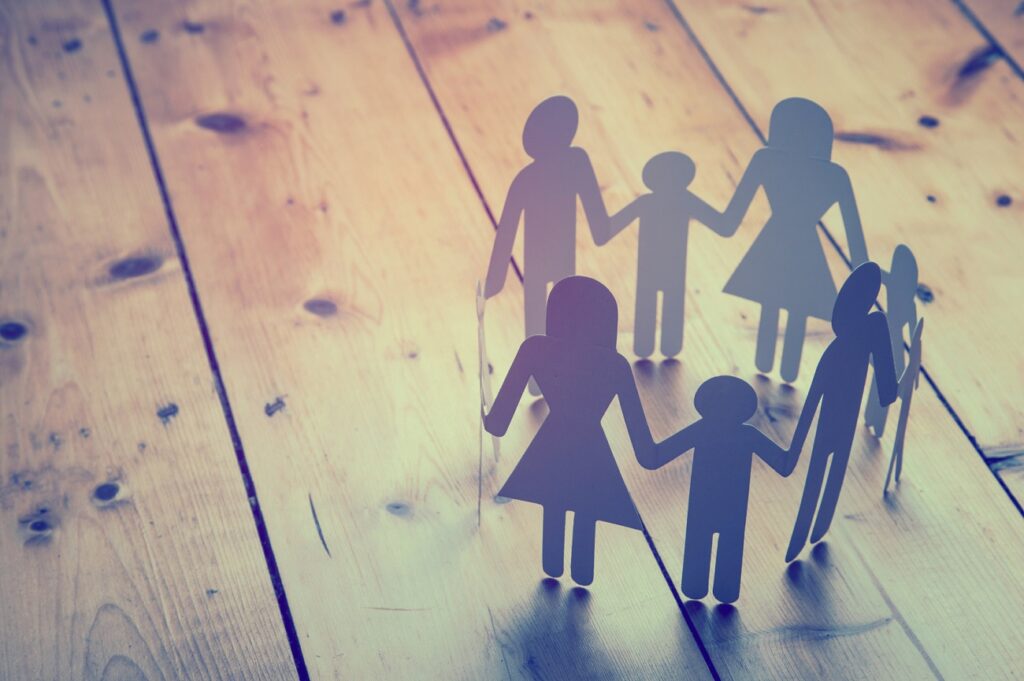This is the third in a series of four articles on Better Organisational Change through Neuroscience by Hilary Scarlett, speaker, consultant and author of Neuroscience for Organizational Change – an evidence-based practical guide to managing change.
We have hugely underestimated people’s need for social connection at work.
We understand the importance of relationships in our personal lives and yet expect people to switch into professional mode at work and reduce the need for relationships.
Neuroscience shows that our brains are very sensitive to rejection.
Naomi Eisenberger and Matt Lieberman of UCLA have shown that even suddenly being left out of a cyberball game (playing ‘catch’ with two other people while lying in an fMRI scanner) activates the pain network in the brain.
To the brain, social exclusion feels very similar to physical pain. In fact, Eisenberger and others have demonstrated that paracetamol and other painkillers not only reduce our physical pains but our social pains too.
Why is social rejection painful?
Why have we evolved to find social exclusion painful? What purpose does it serve? We are mammals and through our first few days and years of life we would not survive if there wasn’t someone taking care of us and providing food, shelter and warmth. As babies we are acutely aware of the need for protection by others. This need stays with us throughout life, albeit less overtly.
Social Cconnection is part of the SPACES model (Self-esteem, Purpose, Autonomy, Certainty, Equity and Social Connection) as outlined in the previous article. Causing us to want to be part of the group, is one of the brain’s methods of protecting us.
Neuroscience shows that our brains are very sensitive to rejection.
Back out on the savannah we were far more likely to survive if we were part of a tribe than trying to fend for ourselves.
The brain likes to co-operate
Brain scans show that co-operating with others activates the brain’s reward network. The brain likes to co-operate – it feels good. By leading us to co-operate, the brain gives us our best chance of keeping our place in the tribe.
Social connection is an important factor in the SPACES model as there might be times when there is not much a leader or manager can do to provide more certainty or equity, but we always have some control over the quality of our relationships.
Social rejection reduces IQ
Not only does feeling rejected by others feel uncomfortable, it reduces our ability to think, solve problems, form new memories and persevere with difficult tasks.
The American psychologist Roy Baumeister has carried out numerous research studies that demonstrate the negative impact of social rejection on our IQ. This is where we all need to sit up and pay attention: if we are excluding people or not allowing them to feel like full members of the team, we are creating a threat state in their brains and reducing their ability to think.
Good relationships at work are not just a ‘nice to have’, they are essential for us to perform at our best.
We have hugely underestimated people’s need for social connection at work.
‘Us’ versus ‘them’
Belonging to an ingroup is extremely powerful.
Such is our need to want to belong that even when we know that the group we are in has been put together in an arbitrary fashion, we still feel loyalty to that group and identify with group members very quickly. Henri Tajfel conducted research amongst school children: a class of children who knew each other well were asked to look at a slide full of dots and to estimate how many dots there were.
This demonstrates how very quickly we can start to see people who have been neighbours as our enemies
The group was then divided into two on the basis of ‘over-estimators’ and ‘under-estimators’.
Very quickly the two new groups began to bond to become ingroups but saw each other as outgroups and would deny the other group ‘rewards’ even though granting a reward to the other group did not penalise the first group in any way.
This demonstrates how very quickly we can start to see people who have been neighbours as our enemies – as the war in former Yugoslavia, amongst other places, so shockingly demonstrated.
Our brains process thoughts about outgroups in a different way – there is less activation in the medial Prefrontal Cortex – inclining us to see those in outgroups more as objects than as human beings.
Our brains lead us to be biased
One of the less palatable facts that neuroscience has revealed is that our brains lead us all to be biased. Our brains would be overwhelmed if they had to think carefully through every decision that presents itself to us during the day.
So, our brains take shortcuts, making snap decisions about whether we feel people should be in our ingroup or outgroup. We are all both victims and instigators of this.
Unconscious bias training is not enough: the next time we are tired or stressed we will fall back into our biases. We need to set up systems within the workplace that mitigate our biases.
Strengthening social connection at work
So, what can we do to respond to the brain’s need for social connection at work? One of the first steps is reflect and identify who is in our ingroup and who might feel on the outside.
A simple way to do this is to take a piece of paper, write ‘Me’ at the centre, draw an inner circle and an outer circle and plot coworkers and stakeholders onto the circles according to whether they are close or more distant.
Then decide how satisfied you are with the ‘map’ of your relationships – does the closeness of these relationships serve you and your stakeholders?
Face-to-face meetings build ingroups
Science shows that face-to-face contact between people helps to build ingroups. Research shows that we warm to people who are more familiar to us (but note this only applies to the person we meet not to the other members of that team whom we don’t meet).
Shared goals and purpose
Another simple action is to remind people from different groups about their shared goals – focus on what they have in common rather than the differences.
Together
Neuroscience demonstrates that the saying ‘Sticks and stones may break my bones, but words will never hurt me’ is wrong. We are acutely attuned to whether we are accepted or rejected: leaders and managers need to choose carefully the words they use during change.
Remind people from different groups about their shared goals – focus on what they have in common rather than the differences.
Research by Priyanka Carr and Greg Walton of Stanford University in 2014 has revealed a way to put our brains into a positive social place, simply by the use of the word ‘together’.
Participants in their research who had been told that they were working on a problem ‘together’ with others, worked 48% longer and solved more problems correctly than members of another group who worked in the same circumstances but where the word ‘together’ was not used. The very use of the word seems to activate the reward centre of the brain, making us feel that we belong.






